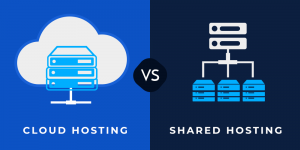
Emphasizing openness, interoperability, and cooperation across different cloud services, the Open Cloud Network (OCN) offers a revolutionary paradigm in cloud computing. Important benefits include increased flexibility, reduced costs, and smooth integration of many cloud systems.
With these advantages, consumers have more control over their data and apps, and innovation is encouraged. OCN does, however, also have to deal with security flaws, management complexities, and possible compliance problems. Organizations thinking of implementing an Open Cloud Network strategy must be aware of the balance between its advantages and disadvantages.
What is Open Cloud NetworK?
The Open Cloud Network (OCN) is a novel cloud computing architecture intended to improve cooperation and interoperability among many cloud services and providers. Smooth integration and communication across different cloud environments allow users to take advantage of the greatest aspects of any platform.
Because OCN encourages open standards and protocols, vendor lock-in is lessened, and a more dynamic, flexible cloud architecture is fostered. With more scalability, flexibility, and efficiency supported by this method, businesses may more easily drive technological innovation and use their cloud resources while keeping control over their data and apps.
How it works?
By use of open standards and protocols, the Open Cloud Network (OCN) enables the smooth integration of many cloud services. To guarantee interoperability, communication and data exchange between many cloud platforms are made possible via middleware and APIs. OCN balances workloads dynamically across many environments by managing and automating processes using automation technologies.
While monitoring tools provide visibility and performance optimization, security frameworks inside OCN guarantee data safety and compliance. OCN enables unified administration and breaks down silos, therefore allowing businesses to effectively and efficiently use the combined capabilities of many cloud services.
Advantages and Disadvantages of Open Cloud Network
Advantages of Open Cloud Network
- Flexibility: Allows companies to choose the finest services and features for their particular requirements without being constrained to a single supplier by enabling smooth integration and migration across many cloud platforms.
- Cost Efficiency: By minimizing vendor lock-in and using competitive pricing from several suppliers, resource allocation and spending may be optimized to result in substantial long-term cost savings.
- Scalability: Guarantees best use of resources and flexibility to changing business needs by allowing resources to be easily scaled up or down across different cloud environments to suit changing demands.
- Innovation: Encourages the use of a variety of tools and technologies, promoting ongoing creativity and enhancing general functionality and performance by integrating the most recent developments in cloud computing.
- Control: By reducing risks connected with provider-specific outages or problems and eliminating reliance on a single cloud provider, offers more control over data and applications.
- Collaboration: Through standardised protocols and interfaces, collaboration is enhanced, enabling greater interoperability and communication between various systems, teams, and organizations, therefore improving productivity and results.
Disadvantages of Open Cloud Network
- Security Risks: Robust security measures and ongoing monitoring are necessary to provide complete protection and data privacy as growing complexity in the network might bring security flaws and difficulties.
- Management Complexity: Managing, orchestrating, and monitoring many cloud systems successfully calls for advanced skills and complex technologies; this may be resource-intensive and may need specific knowledge and experience.
- Compliance Issues: For companies in highly regulated sectors in particular, navigating the many regulatory and compliance requirements across many countries may be difficult, time-consuming, and expensive.
- Performance Variability: Careful choice and optimization of service providers is necessary since possible discrepancies in performance across various cloud services might impact overall efficiency and user experience.
- Initial Setup Costs: For smaller companies or those with tighter resources, putting in place an Open Cloud Network might need large upfront expenditures in infrastructure, training, and integration efforts.
- Interoperability Challenges: Maintaining compatibility and seamless integration across several cloud platforms may be technically difficult and may need constant upkeep and upgrades, which is a continuing operational challenge.
In summary, the Open Cloud Network (OCN) offers a paradigm change toward openness, interoperability, and cooperative synergy across various cloud services, and it represents a crucial development in cloud computing. It enables businesses to make use of the advantages of many suppliers, therefore encouraging creativity, adaptability, and economy of cost. OCN has problems like security flaws, management complexity, and regulatory compliance concerns that need close attention, even with its revolutionary potential.
Adoption that works depends on strategic planning, strong governance structures, and constant technical adaption. Effective navigation of this complexity allows companies to use OCN to propel digital transformation, improve operational agility, and attain long-term expansion in the ever-changing cloud environment.
FAQs
Q1. How does the Open Cloud Network impact data sovereignty and jurisdictional compliance?
The dispersed character of OCN brings up the issues of where data really lives and which jurisdiction’s laws apply. To maintain compliance while taking use of OCN’s advantages, organizations must negotiate the many data protection laws in various locations.
Q2. What are the implications of OCN on network latency and data transfer speeds?
The fact that OCN depends on many cloud providers might cause latency problems since data has to travel across several networks. To maintain performance levels across the network, organizations require plans to maximize data transfer rates and reduce latency.
Q3. How does OCN address interoperability standards between different cloud providers?
OCN encourages interoperability via use of open standards and APIs, however it is still technically difficult to guarantee smooth integration of many cloud platforms. Smooth communication and data sharing may need middleware solutions or standardized protocols inside organizations.
Q4. What role does OCN play in disaster recovery and business continuity planning?
Because OCN is dispersed, redundancy across many cloud providers helps improve disaster recovery capabilities. To handle failover situations and guarantee data availability during interruptions, businesses must, however, create thorough strategies.
Q5. What are the potential environmental impacts of OCN in terms of energy consumption and sustainability?
Advantages in efficiency and scalability of OCN may help lower cloud computing energy usage overall. To lessen the environmental effects, nevertheless, sustainable practices and energy-efficient technology must be taken into account given the footprint of many data centers and growing data traffic.






